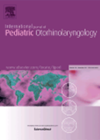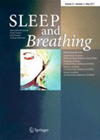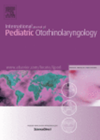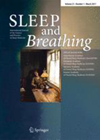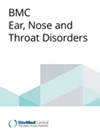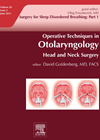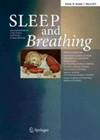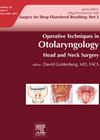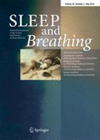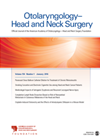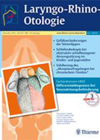
Journal Reviews
Can telemetry predict sleep apnoea in Pierre Robin sequence?
The aim of this study was to see if telemetry data gathered on patients with Pierre Robin sequence (PRS) correlated with sleep study data. A retrospective review of 46 patients from a tertiary referral centre were included in the study....
How useful is AHI?
There is a growing unease in the sleep medicine world about the usefulness of the apnoea-hypopnoea index (AHI). Most of our objective evidence about obstructive sleep apnoea (OSA) is in some way related to the AHI, and the respiratory physicians...
Polysolmnography and laryngomalacia severity
Laryngomalacia represents the single most common cause of stridor in infants. Most cases are self-resolving, but a proportion of children will require surgical intervention. This group aimed to analyse the efficacy of polysomnography in determining the severity of laryngomalacia in...
The sleep nasendoscopy learning curve
There seems to be no accepted way of surgically assessing patients with sleep disordered breathing (SDB). Because of this, clinicians fall roughly into three camps: those who just use one operation for all patients, those who have given up surgery...
Comparison of outcomes after septoplasty
For this prospective study, the authors assessed the quality of life (QoL) with the rhinosinusitis SNOT-20 (Sino-Nasal Outcome Test-20) questionnaire and the symptoms on a visual analogue scale (VAS) in all patients undergoing nasal septal surgery. The patients reported the...
Surgical options for children with OSA
This paper looks at the surgical management of OSA in children and approaches the method of patient selection initially. They discuss the role of polysomnography in that it is part of the AAOHNS criteria in those patients with OSA symptoms...
Outcome of TORS to tongue base and epiglottis in patients with OSA intolerant of conventional treatment
The use of transoral robotic surgery (TORS) in ENT is rather controversial, but the use of robotic surgery for obstructive sleep apneoa (OSA), makes it doubly so. Previous studies on TORS in OSA have been performed with other types of...
Stimulation for a good night’s sleep
This article was an interesting read. It is an update from the authors’ original paper printed in the NEJM in 2014 regarding the results of an implantable pulse generator (IPG) for stimulating the hypoglossal nerve in response to respiration. This...
Effectiveness of oral pressure therapy in obstructive sleep apnoea: a systematic analysis
Oral pressure therapy (OPT) is a relatively new form of therapy for obstructive sleep apnoea (OSA). Paradoxically it seems to work even though it creates a vacuum in the oral cavity as opposed to the gold standard of continuous positive...
Hypoglossal stimulation for OSA
Continuous positive airway pressure (CPAP) is a highly effective treatment for moderate-to-severe obstructive sleep apnoea (OSA), but suffers significantly from poor patient adherence. This paper reports the three-year outcomes of a prospective multicentre cohort study examining the effect of hypoglossal...
The Impact of sleep endoscopy for paediatric obstructive sleep-disordered breathing
Paediatric obstructive sleep apnoea (OSA) is not always resolved or improved with adenotonsillectomy. Persistent or complex cases of paediatric OSA may be due to sites of obstruction in the airway other than the tonsils and adenoids. Investigation of paediatric obstructive...

